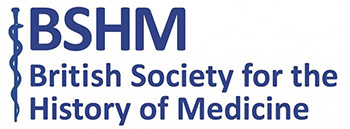 Philip Milnes-Smith is investigating the undeserved slide into obscurity of Mary Wardell, founder of a scarlet fever convalescent home.
Philip Milnes-Smith is investigating the undeserved slide into obscurity of Mary Wardell, founder of a scarlet fever convalescent home.
During the pandemic, a freelance archive opportunity introduced me to the forgotten public health pioneer Mary Wardell, who founded an isolation convalescent home for Londoners with scarlet fever at Brockley Hill, Stanmore in North London. I am now looking for new leads.
Mary’s experience with Ellen Ranyard’s London Bible and Domestic Female Mission revealed to her the impossibility in the homes of the poor of separating the well from the sick (who might remain infectious for six weeks or more). Ordinary convalescent homes could not take people with infectious diseases.
The institution Mary founded was credited with helping to reduce the spread and consequently the mortality rate from scarlet fever, but it was still deemed unique decades after it opened.
We do not know why she selected Alexander Patrick Stewart (1813-1883) as the physician to whom she explained her vision. Perhaps she consulted the Medical Directory and noted his publications distinguishing typhus from typhoid fever, on cholera and on sanitary reform.
Other backers from the medical profession so far identified include Henry Wentworth Dyke Acland (1815-1900), Sir James Risdon Bennett (1809-1891), Sir George Buchanan (1831-1895), Sir George Burrows (1801-1887), Sir Joseph Fayrer (1824-1907), James Hill Gibson (1856-1912), Sir Edward Henry Sieveking (1816-1904) and Sir Thomas Watson (1792-1882).
Perhaps one of them was the gushing “patriarch” The Girl’s Own Paper’ quoted as having said: “I wish I were a young man, that I might plant my foot in the work, and help you with all my might.”
There are so far no known links between Mary Wardell and the first generations of qualified medical women. However, some connections to the broader Victorian movement for female education and emancipation seem likely for a middle-class woman who chose to work as a governess, and whose public health project had some backing from the Ladies’ Sanitary Association. It should also be noted that personal reticence did not prevent her standing up for her project in publications like The Hospital and The Lancet.
While stories of pioneering women doctors and nurses are kept i n circulation by their respective professions, Mary had no such metaphorical descendants to keep her flame alive. Her undeserved slide into obscurity began with the conversion of her facility to an auxiliary hospital in the First World War and further accelerated with her death in 1917. So far, no image of her has been identified. The quest for Mary Wardell continues.
n circulation by their respective professions, Mary had no such metaphorical descendants to keep her flame alive. Her undeserved slide into obscurity began with the conversion of her facility to an auxiliary hospital in the First World War and further accelerated with her death in 1917. So far, no image of her has been identified. The quest for Mary Wardell continues.
References
“A Convalescent Home for Scarlet Fever Patients”. The Quiver. 24: 635. 1889.
Stewart, A. P. (1882). “Are Homes For Convalescents From Scarlatina Desirable? And, If So, At What Period Can The Patients Be Safely Removed To Them?”. The British Medical Journal. 1 (1107): 374–375. doi:10.1136/bmj.1.1107.374. ISSN 0007-447. JSTOR 25259190. PMC 2371537. PMID 20750140.
https://www.victorianvoices.net/ARTICLES/GOP/London/1889-ScarletFeverHome.pdf
Philip Milnes-Smith was freelance archival consultant for Pegleg Productions’ Searching for the Grey Lady project at the Royal National Orthopaedic Hospital. The digital archivist at Shakespeare’s Globe, he also undertakes freelance archival and oral history work, and volunteers for the Archives and Records Association.




 imated kind of abstract sculpture very close to what I had been seeking in my own work.” This resulted in an iconic series of painted drawings of operations, and informed much of her subsequent sculpture. (Drawing by Barbara Hepworth © Bowness)
imated kind of abstract sculpture very close to what I had been seeking in my own work.” This resulted in an iconic series of painted drawings of operations, and informed much of her subsequent sculpture. (Drawing by Barbara Hepworth © Bowness) 
